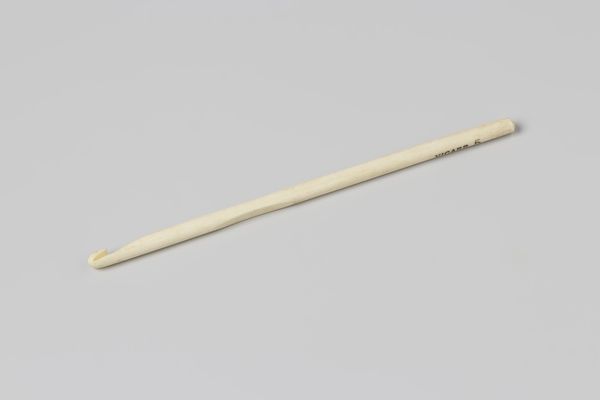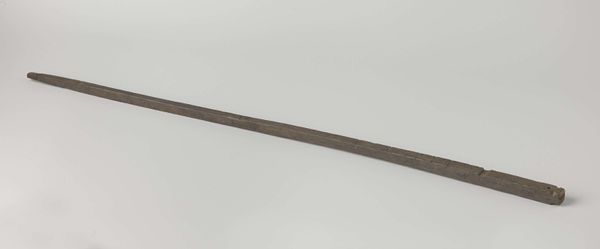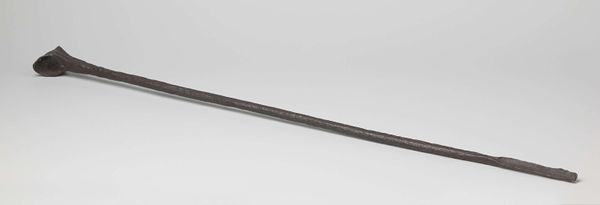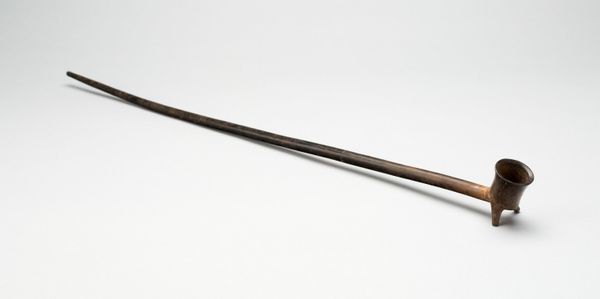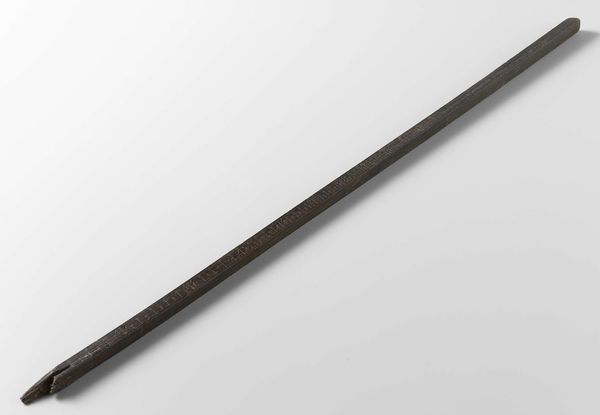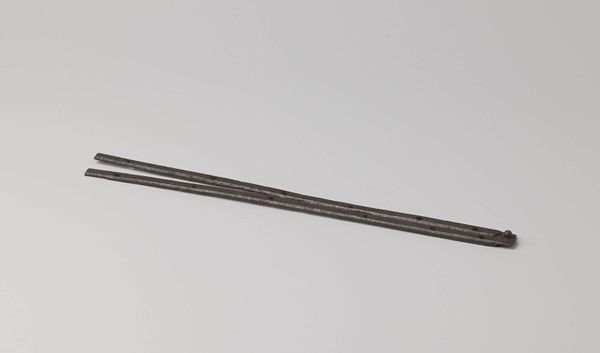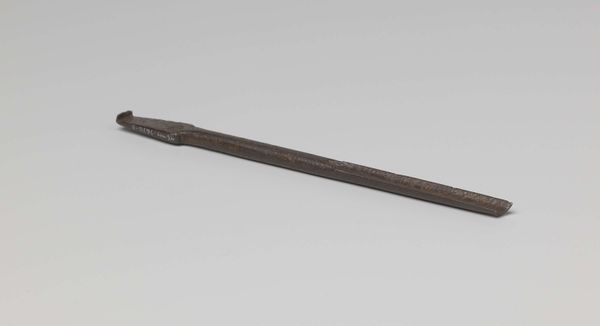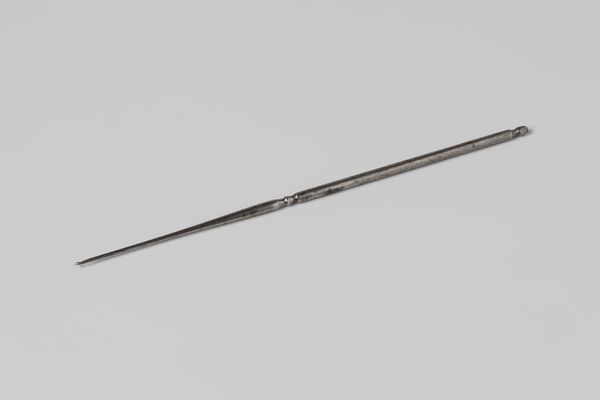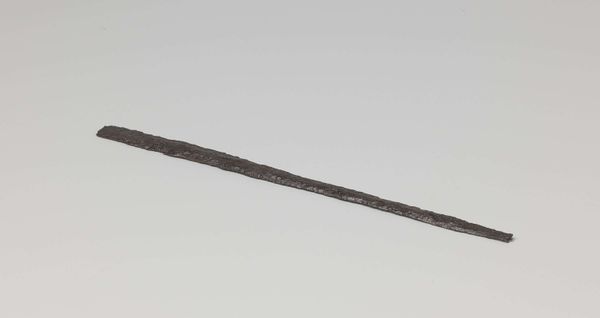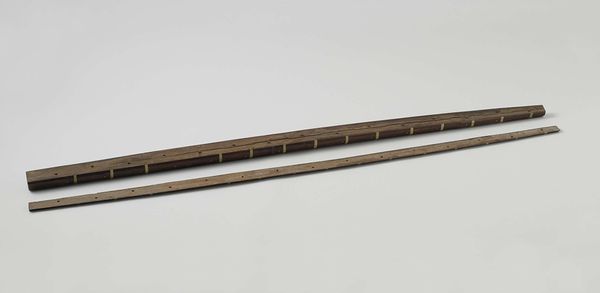
sculpture, wood
#
minimalism
#
form
#
sculpture
#
abstraction
#
line
#
wood
Copyright: Robert Grosvenor,Fair Use
Editor: This is Robert Grosvenor’s “Untitled” from 1973, a wooden sculpture. It appears to be simply a length of wood, almost like a dowel. It seems exceptionally…minimalist. What do you see in this piece? Curator: Indeed. The radical reduction of form is precisely the point. Grosvenor, aligned with Minimalism, presents us with the essence of line and volume. Consider the dialogue between the cylindrical form and the implied horizontal plane. Do you observe any disruptions in the uniformity? Editor: Yes, there’s a knot or imperfection in the wood near the middle. Does that mark contribute meaning, or is it merely a flaw in the material? Curator: Ah, that perceived ‘flaw’ is integral. It interrupts the perfect geometry, introducing a tactile and visual counterpoint. It reminds us of the material’s inherent qualities, its past life as a tree. Think about how the play of light emphasizes this contrast between the smooth, machined surface and the rougher texture of the knot. How does this tension inform your understanding of the whole? Editor: I see… It prevents the sculpture from being too sterile, perhaps. It gives it a connection to something natural. Curator: Precisely. It's about experiencing the essential qualities of form and material, and how they interact. It encourages us to focus on the physical presence of the work. Editor: That’s a fresh perspective; I initially dismissed it as just a plain, unfinished piece. Paying close attention to these structural details really transforms how one engages with the artwork. Curator: Indeed. Minimalism often demands a more disciplined mode of looking. Therein lies its subtle power.
Comments
No comments
Be the first to comment and join the conversation on the ultimate creative platform.
